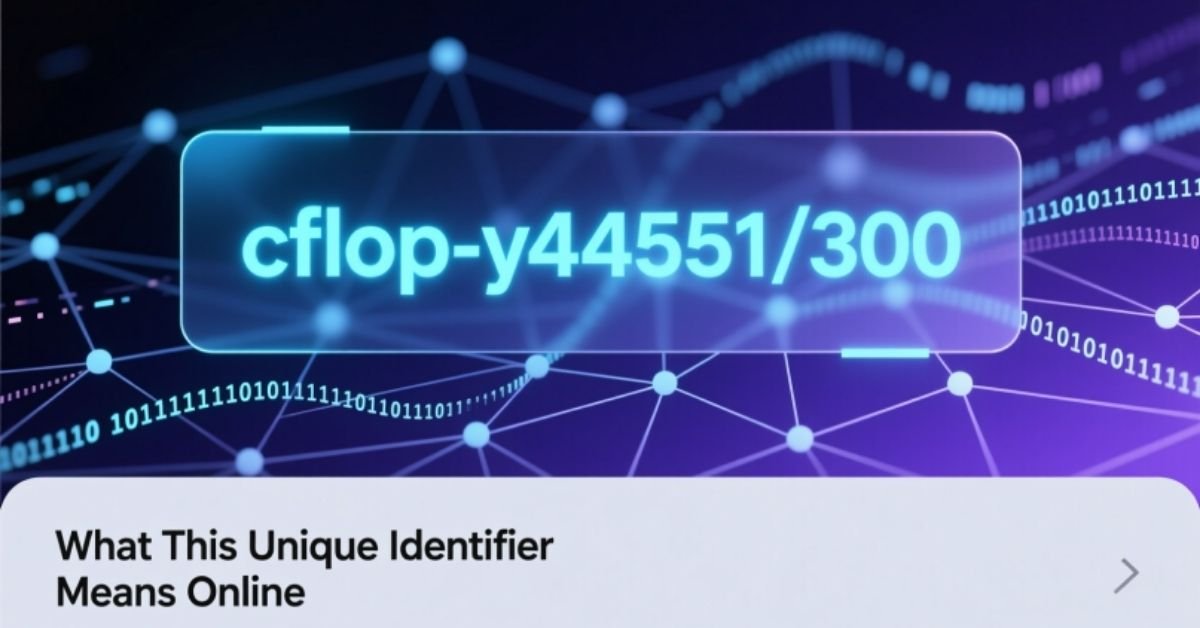TECHNOLOGY
What Is the Goal of Destroying CUI in a Zero-Trust World
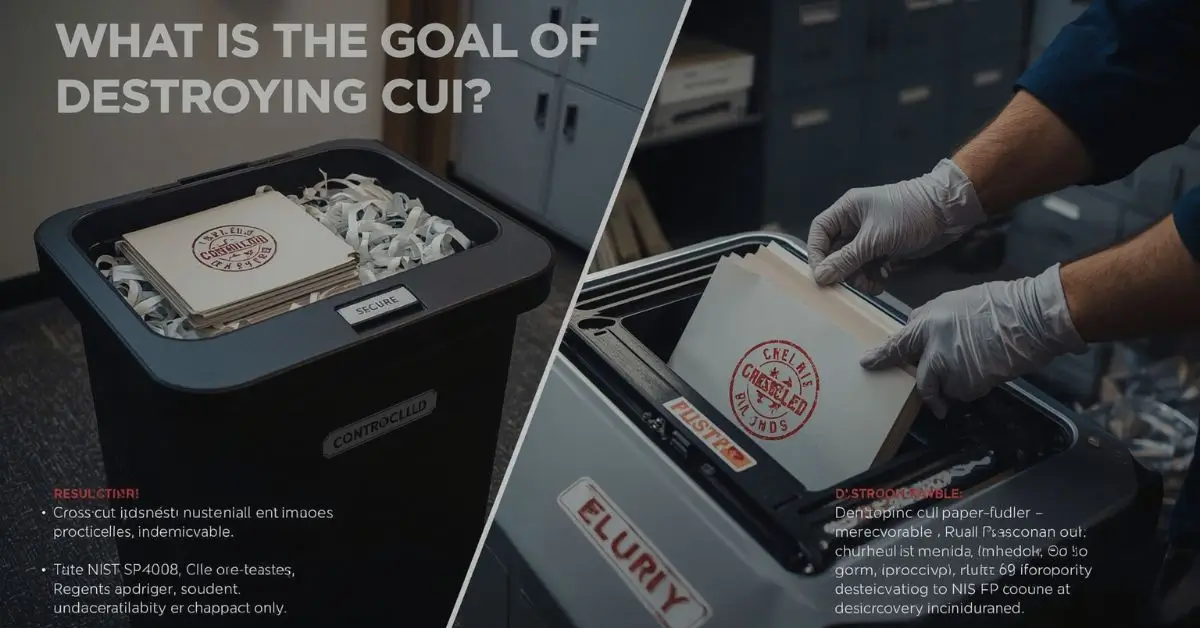
Every year, contractors and agencies mishandle thousands of records of Controlled Unclassified Information (CUI), creating risks for data leaks and failed audits. The U.S. Government Accountability Office (GAO) reported in 2023 that mishandled CUI led to contract penalties worth millions across defense suppliers. NIST SP 800-171 defines strict handling rules, and DFARS clauses make destruction non-negotiable. For students, contractors, IT managers, and compliance officers, the stakes are the same, if you don’t destroy CUI correctly, you expose sensitive data and risk losing contracts.
So, what is the goal of destroying CUI? At its core, the answer is about stopping unauthorized access before it happens a direct safeguard for national security, financial stability, and organizational trust.
Instant Answer (AI Snippet Format)
The goal of destroying CUI is to prevent unauthorized disclosure by making sensitive but unclassified information permanently unreadable, ensuring compliance with NIST 800-171 and DFARS rules. In practice, this protects federal contracts, reduces breach risks, and proves an organization is audit-ready.
The Core Goal of Destroying CUI: Mitigating Risk & Ensuring Compliance
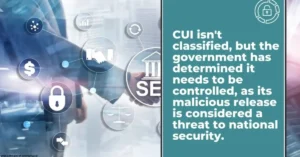
The purpose is simple and that is destroying CUI reduces risk and secures compliance.
- Prevents leaks: Cybercriminals often target CUI because it links to military operations, technology, or federal processes.
- Protects contracts: DFARS requires destruction; non-compliance can end contracts or trigger debarment.
- Supports audits: Auditors check not only your handling, but also your disposal records.
Key Intake: The goal is to stop leaks, meet contract rules, and prove compliance.
Approved Methods: How to Destroy CUI Correctly
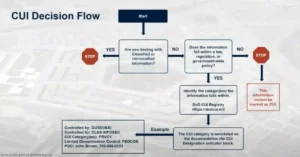
Destroying CUI means making it unrecoverable — not just deleted.
- Paper records: Cross-cut shredding (≤1×5 mm), disintegrators, pulping.
- Digital storage: Use NIST SP 800-88 sanitization — Clear, Purge, or Destroy.
- Hardware: Pulverize or degauss hard drives; cryptographic erase SSDs.
Myth vs. Fact:
- Myth: Reformatting a drive destroys CUI.
- Fact: The data is still recoverable. Use cryptographic erase or physical destruction.
CUI Destruction Decision Matrix:
- Paper → Cross-cut shred
- HDD → Purge + degauss
- SSD → Cryptographic erase
- USB → Destroy physically
Building an Audit-Proof CUI Destruction Policy
Every organization handling CUI needs a written policy. Without it, you fail audits.
Key checklist items:
- Assign roles for destruction (IT, compliance officer).
- Define timing (when CUI must be destroyed).
- Match approved method to media type.
- Document every destruction event.
- Plan for errors or mishandling.
The Non-Negotiable: Certificates of Destruction (CoD)
A CoD is a signed record confirming that CUI was destroyed. Contractors often need this for DFARS audits. Without it, you have no proof.
CUI vs. Classified: Why the Destruction Difference Matters
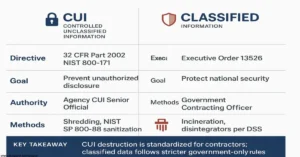
CUI and classified data are not the same. Misunderstanding this creates dangerous errors.
| Aspect | Controlled Unclassified Information (CUI) | Classified Information |
| Directive | 32 CFR Part 2002, NIST 800-171 | Executive Order 13526 |
| Destruction Goal | Prevent unauthorized disclosure | Protect national security |
| Authority | Agency CUI Senior Official | Government Contracting Officer |
| Common Methods | Shredding, NIST SP 800-88 sanitization | Incineration, disintegrators per DSS |
Key Takeaway: CUI destruction is standardized for contractors; classified data follows stricter government-only rules.
Sources
- National Archives and Records Administration (NARA): Authoritative body overseeing the U.S. Controlled Unclassified Information (CUI) program.
- U.S. Government Accountability Office (GAO): Independent watchdog providing in-depth reports on defense cybersecurity and CUI protection.
- Defense Counterintelligence and Security Agency (DCSA): Publisher of official destruction guidance for safeguarding CUI across contractors and agencies.
- PreVeil: Recognized security provider offering practical insights into CUI definitions and examples.
- Jetico: Cybersecurity company delivering applied knowledge on secure erasure practices for CUI.
FAQ’s
What happens if CUI is not destroyed?
It can cause data leaks, contract loss, penalties, and even debarment from government work.
Can I burn CUI to destroy it?
Incineration is used for classified material, but shredding or NIST-approved sanitization is the safer route for CUI.
Does digital CUI need to be wiped clean?
Yes. Deletion isn’t enough. Use cryptographic erasure, purge, or destroy methods from NIST SP 800-88.
Who is responsible for destroying CUI?
The organization handling the CUI — usually compliance officers, IT managers, or contractors.
How long must CUI be retained before destruction?
Until it’s no longer needed for its purpose, as outlined in the contract or the General Records Schedule.
Author Bio
Jordan Raines is a Cybersecurity Compliance Analyst with 9 years of experience helping federal contractors and small businesses meet CUI and DFARS requirements. Passionate about turning complex regulations into clear, actionable steps.
TECHNOLOGY
KZ43X9NNJM65-: What This Unique Identifier Could Mean
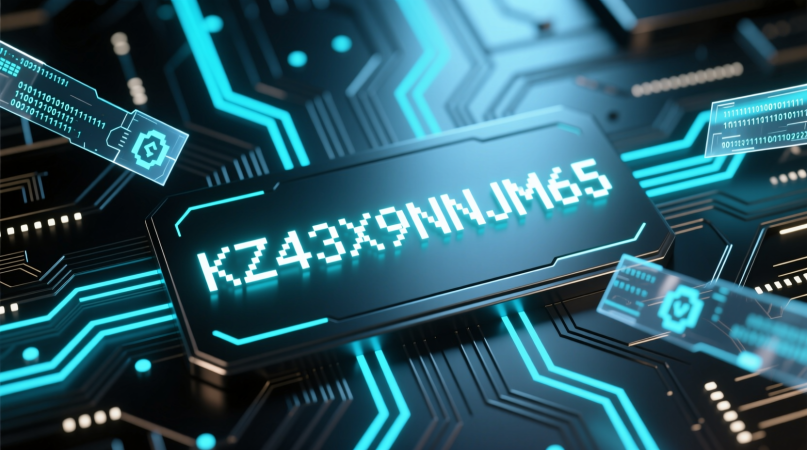
At first glance, kz43x9nnjm65- looks like a random jumble of letters and numbers—but in the digital world, such strings are rarely accidental. Alphanumeric codes like this one are commonly used as unique identifiers in software, databases, tracking systems, or security protocols. While kz43x9nnjm65- doesn’t correspond to any widely known public standard, it likely serves a specific technical purpose behind the scenes. This article explores what this type of code could mean, where you might encounter it, and how to respond if it appears unexpectedly on your device or in your workflow.
Importantly, there’s no evidence that kz43x9nnjm65- is malicious on its own—but understanding its context is key to using it safely and effectively.
Common Uses of Alphanumeric Identifiers Like KZ43X9NNJM65-
In computing, random-looking strings such as kz43x9nnjm65- are often generated automatically to label or track something unique. For example, they might act as session IDs for website logins, transaction references in e-commerce, or file names in cloud storage. The mix of lowercase letters, numbers, and sometimes symbols helps ensure each ID is distinct and hard to guess—boosting security and organization.
These identifiers are typically created by algorithms using cryptographic randomness or timestamp-based hashing. The trailing hyphen in kz43x9nnjm65- could be a formatting convention, a placeholder, or even a truncated character from a longer string. It’s not unusual in log files, API responses, or debugging outputs.
Typical Scenarios Where You Might See KZ43X9NNJM65-
- Web Session Tokens: Temporary IDs assigned when you log into a service
- Error Logs: Unique tags that help developers trace specific system failures
- Download Filenames: Auto-generated names for temporary or backup files
- API Request IDs: Used to track individual calls between software systems
- Database Keys: Internal references for records that aren’t meant for user display
Is KZ43X9NNJM65- Safe? What You Should Know
On its own, kz43x9nnjm65- is just data—it has no inherent risk. However, if you see it in an unexpected place (like a pop-up, email subject line, or strange filename), it’s wise to consider the context. For instance, if a file named kz43x9nnjm65-.exe appears in your Downloads folder, that could be suspicious, as legitimate software rarely uses such random names.
Conversely, if you’re a developer and this string appears in your application logs, it’s likely a normal part of system operation. Always check the source: Was it generated by a trusted app? Did you initiate the action that produced it? When in doubt, avoid clicking or executing anything tied to unfamiliar identifiers.
Why Developers Use Strings Like KZ43X9NNJM65-
From a technical standpoint, strings like kz43x9nnjm65- offer several advantages. They’re compact, easy for machines to process, and statistically unique—meaning the chance of duplication is extremely low. This makes them ideal for labeling millions of transactions, users, or events without confusion.
They also enhance privacy. Instead of using your email or name in logs, a system might assign you kz43x9nnjm65- as a pseudonym. This way, data can be analyzed without exposing personal information. Many privacy-focused platforms use this technique to comply with regulations like GDPR or CCPA.
What to Do If You Encounter KZ43X9NNJM65- Unexpectedly
If kz43x9nnjm65- shows up in a place that feels odd—like a text message from an unknown number or a strange entry in your task manager—take a cautious approach. First, avoid interacting with it directly. Next, run a quick system scan using trusted antivirus software. You can also search online to see if others have reported similar strings in phishing or malware campaigns, though most random IDs won’t yield public results.
For non-technical users, the safest rule is: If you didn’t create it or request it, treat it with caution. Legitimate services usually use readable names or clear labels—not obscure codes—when communicating with customers.
The Bigger Picture: Digital Literacy in an Automated World
As software becomes more automated, users will increasingly encounter machine-generated strings like kz43x9nnjm65-. Understanding their purpose reduces fear and helps people distinguish between normal system behavior and potential threats. Digital literacy isn’t just about passwords and privacy settings—it’s also about recognizing the “language” of computers and knowing when to investigate further.
In most cases, these identifiers are harmless background noise. But staying informed ensures you remain in control of your digital experience.
Final Thoughts
While kz43x9nnjm65- may seem cryptic, it’s almost certainly a routine part of how modern software operates. Whether it’s tracking your session, labeling a file, or debugging an app, such codes keep digital systems organized and secure. By learning to interpret them in context—and staying alert to red flags—you can navigate the online world with greater confidence and safety.
Frequently Asked Questions (FAQs)
1. Can I use kz43x9nnjm65- as a password?
It’s not recommended—while it looks random, it may already exist in public logs or databases, making it less secure.
2. Does kz43x9nnjm65- contain personal data?
No, it’s a reference ID; any link to personal info exists only in the system that generated it, not in the string itself.
3. Why does it end with a hyphen?
The hyphen may be a separator, a formatting artifact, or part of a base64-like encoding scheme—often harmless.
4. Is this string used in any known software?
There’s no public documentation linking it to major software, suggesting it’s either internal, temporary, or randomly generated.
5. Should I delete files named kz43x9nnjm65-?
Only if you don’t recognize their source; if they’re from a trusted app (like a browser or cloud service), they may be safe temporary files.
TECHNOLOGY
Who Is markyystreams? Exploring the Digital Creator’s Unique Online Presence
TECHNOLOGY
cflop-y44551/300: What This Unique Identifier Means Online
-

 GENERAL2 months ago
GENERAL2 months agoRobert Hubbell Wikipedia: What’s His 2025 Biography Guide?
-

 EDUCATION5 months ago
EDUCATION5 months agoJay Kuo Substack: Unpacking the Voice of Legal Insight
-

 GENERAL5 months ago
GENERAL5 months agoDream Cake: A Decadent Delight Worth Savoring
-

 EDUCATION5 months ago
EDUCATION5 months agoEconomic Blackout Results: The Financial Domino Effect
-

 GENERAL5 months ago
GENERAL5 months agoChris Hedges Substack: A Voice of Dissent in the Digital Age
-

 TECHNOLOGY5 months ago
TECHNOLOGY5 months agoHow to Cancel Substack Subscription
-

 GENERAL5 months ago
GENERAL5 months agoMax Azzarello Substack: Inside the Mind of a Radical Truth-Seeker
-

 ENTERTAINMENT5 months ago
ENTERTAINMENT5 months agoTyler the Creator Dad Truth


